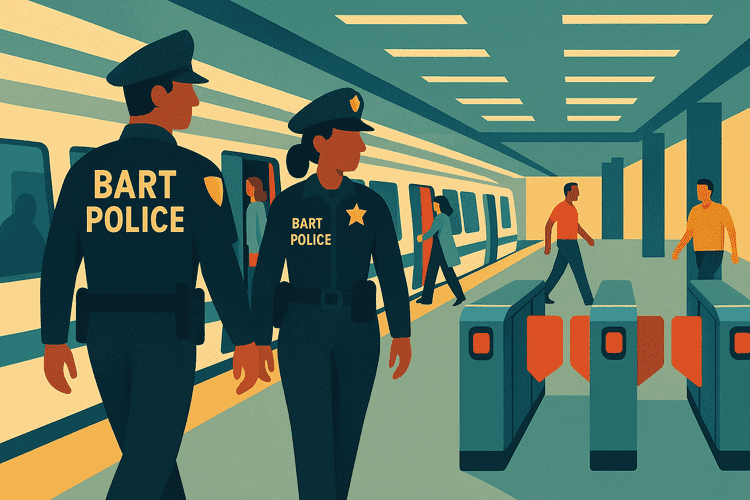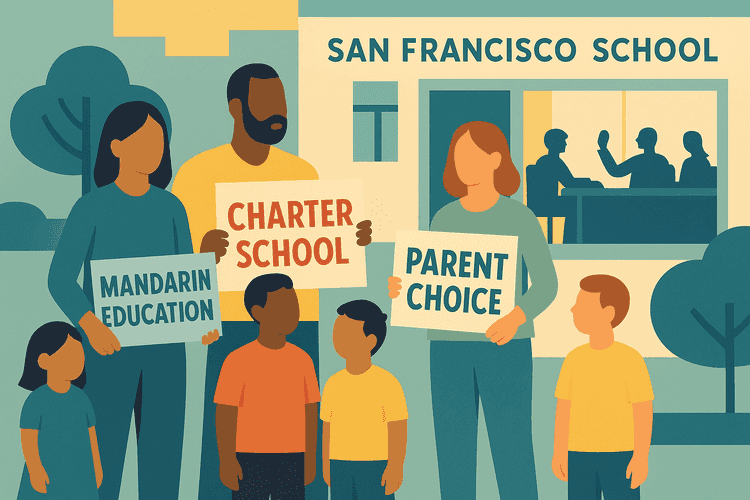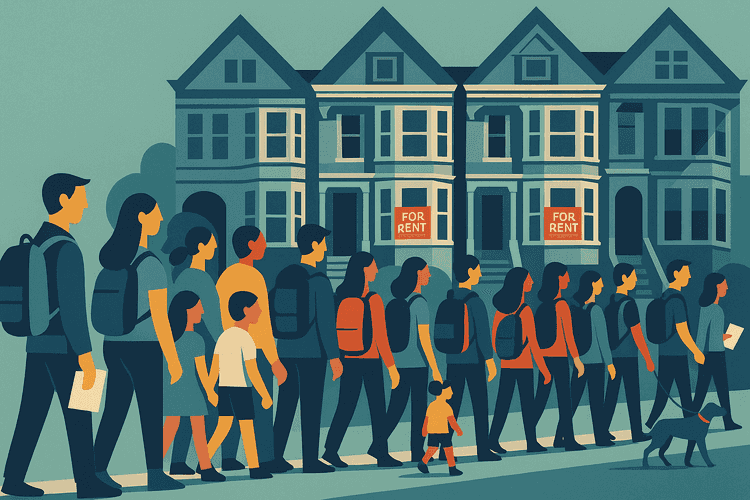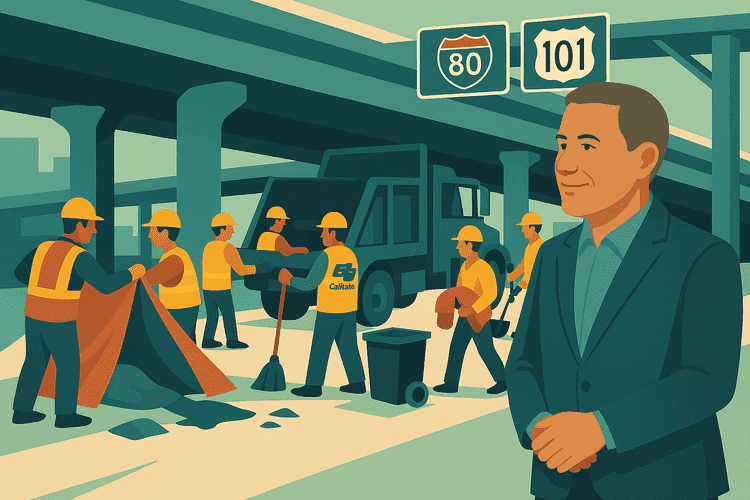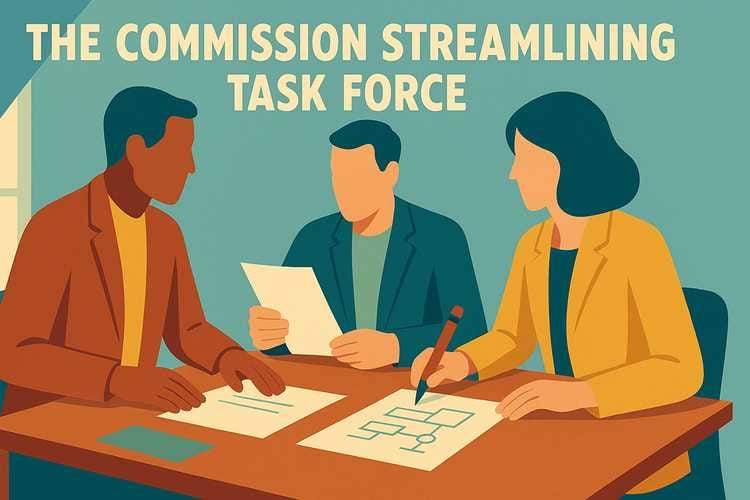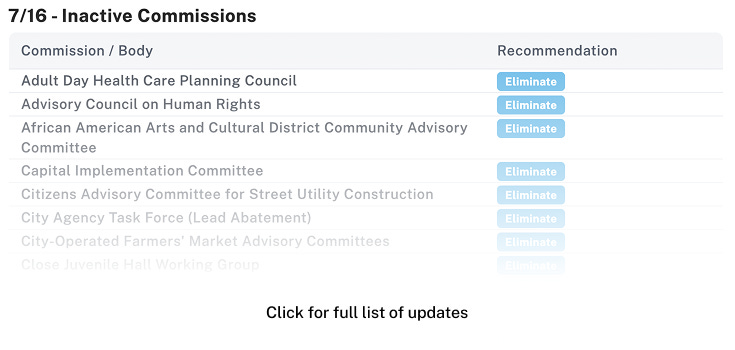BART Crime Plummets 36% as Security Upgrades Pay Off
PLUS: We were wrong about Prop E: The Commission Streamlining Task Force
What You Need To Know
Here’s what happened around the city for the week of August 24, 2025:
- BART Crime Plummets 36% as Security Upgrades Pay Off
- SFUSD Blocks Mandarin Charter School
- SF Apartment Rents Hit Highest Level Since April 2020
- SF Partners with Caltrans to Clear Highway Encampments
Recent & upcoming openings:
- Shuggies reopens, shrugging off the “trash pie” label
Research:
- The Commission Streamlining Task Force
BART Crime Plummets 36% as Security Upgrades Pay Off
Published August 29, 2025
The Facts
BART crime dropped dramatically in the first seven months of 2025, with violent crimes falling 36% from 203 incidents in 2024 to 130 this year. Property crimes plummeted even further, with robberies down 71% and car burglaries decreasing 64%.
The transit agency attributes these improvements to reinforced fare gates installed at 48 of BART's 50 stations and increased police officer visibility throughout the system. Fare evasion also dropped 21% in recent months as enforcement improved.
The Context
BART's crime reduction comes as Bay Area transit agencies face ongoing safety concerns that have deterred ridership since the pandemic. The new fare gates represent a significant infrastructure investment designed to control access and reduce both fare evasion and criminal activity.
The improvements follow years of public complaints about transit safety and calls for enhanced security measures. BART police currently have 21 officer vacancies, but leadership believes the combination of technology upgrades and strategic deployment is proving effective even with staffing gaps.
The GrowSF Take
Data-driven policing and smart infrastructure investments work. BART's success demonstrates that targeted security measures deliver measurable results when agencies focus on effective solutions rather than excuses.
The 36% reduction in violent crime isn't just a statistic—it represents real safety improvements for the hundreds of thousands of Bay Area residents who depend on transit. When government agencies use technology strategically and deploy resources effectively, they can transform public safety outcomes and restore confidence in essential services.
SFUSD Blocks Mandarin Charter School
Published August 29, 2025
The Facts
The San Francisco Unified School District Board of Education unanimously rejected the Dragon Gate Academy charter school proposal Tuesday in a 7-0 vote, ending a months-long effort by parents to create a new Mandarin-immersion school. The parent coalition, led by Brian Hollinger, plans to appeal the decision to the state.
SFUSD criticized the school proposal over failing to "demonstrate a clear educational program," and for being unlikely "to serve the interests of the entire community in which the school is proposing to locate." Currently, only two elementary schools and one middle school within SFUSD offer Mandarin immersion programs, leaving parents with expensive private Mandarin immersion options as their only other choice.
The Context
The charter rejection came as no surprise in union-controlled SFUSD, which hasn't approved a new charter school since 2014.
Shortly after parents submitted the Dragon Gate petition, Superintendent Maria Su proposed the district's own Mandarin-immersion program. Advocates for the school allege that the timing was designed to undercut the charter effort, but Superintendent Su denied this connection, stating the district plan had been in development for months.
The vote shows that what parents want and what the district is prepared to offer are not always in sync. The booming demand for private Mandarin schools shows parents seek alternatives to limited district options, but only if they can afford it.
The GrowSF Take
While we sympathize with the budget constraints, we believe that expanding educational options should be a priority.
The real losers are San Francisco families who want high quality and affordable Mandarin education for their children.
SF Apartment Rents Hit Highest Level Since April 2020
Published August 29, 2025
The Facts
San Francisco's median monthly apartment rent surged 11.5% to $3,040 in August 2025, according to Roland Li at The Chronicle This is the highest level since April 2020, though still below the July 2019 peak of over $3,200. The city once again led the nation in annual rent increases, according to new data from Apartment List.
San Francisco's vacancy rate sits at just 3.8%, far below the national average of 7.1%. While U.S. median rents fell 0.9% to $1,400 in August 2025, San Francisco's explosive growth reflects the AI boom, return-to-office policies, and critically low housing supply.
The Context
The rent surge contradicts national trends, where new construction increased supply and pushed vacancy rates to multi-year highs. San Francisco's median rent crashed from over $3,200 in July 2019 during the pandemic, making current August 2025 levels the highest recovery point since April 2020.
While observers point to the AI boom as a driver, the real culprit is policy-created scarcity. In addition to restrictive zoning, slow processes, and endless appeals by annoyed neighbors, San Francisco also charges impact fees that can account for up to 10% of total development costs, while Seattle charges no impact fees at all. Perhaps that's why Seattle manages to build 10,000 homes per year even under current economic conditions. Despite rent increases approaching pre-pandemic levels, virtually no new apartment construction is underway as builders cite high costs and regulatory barriers.
Renters report bidding wars, crammed open houses, and listings disappearing within days—conditions reminiscent of the 2010s boom.
The GrowSF Take
San Francisco's housing crisis isn't a market failure—it's a policy failure. While other cities built apartments that kept rents stable, SF's red tape and slow approvals created artificial scarcity that now forces residents to pay crushing rents.
The city's 3.8% vacancy rate versus the national 7.1% tells the story: when supply can't meet demand due to bureaucratic barriers, renters pay the price. Streamlined approvals and reduced development barriers remain the only path to housing affordability.
SF Partners with Caltrans to Clear Highway Encampments
Published August 28, 2025
The Facts
San Francisco can now clear homeless encampments on Caltrans property within city limits after Mayor Daniel Lurie announced a partnership with the state agency Wednesday. The agreement covers specific locations along U.S. 101 and Interstate 80, including areas near Market and Octavia streets, South Van Ness and 13th Street, and the Fifth Street on- and off-ramps.
City crews will prioritize sites that pose health and safety risks, such as encampments close to traffic or near unstable structures. Some costs will be reimbursed by the state, and the partnership aims to connect homeless people to city services and housing.
The Context
Before this agreement, the city needed state permission to work on properties near freeways, even within San Francisco's boundaries. Homeless encampments on Caltrans property had largely avoided sweeps, becoming last refuges for camps after the city's aggressive tent removal following a Supreme Court ruling last summer.
The partnership builds on Mayor Lurie's enforcement-plus-services approach, which has driven a 40% increase in shelter placements and reduced citywide encampments by 25% since March. Safety concerns have mounted, with several fires under highways and an alleged arsonist causing an explosion near an auto-repair shop.
The GrowSF Take
This partnership demonstrates effective governance: identifying bureaucratic barriers and working across agencies to solve them. Rather than accepting that state property was off-limits, Mayor Lurie negotiated a practical solution that expands the city's enforcement capabilities while connecting people to services.
The 40% increase in shelter placements shows this approach delivers results, not just enforcement theater. When government agencies coordinate effectively instead of operating in silos, they can tackle complex problems that span jurisdictions and provide real solutions for both public safety and human dignity.
Recent & upcoming openings
A great city is constantly changing and growing, let’s celebrate what’s new!
Shuggie’s reopens, shrugging off the “trash pie” label
Shuggies Trash Pie & Natural Wine built a loyal following of fan seeking a zero-waste dinner and wine that… let’s say wine that has character. But according to Dianne de Guzman at Eater SF, they’ve dropped the “trash pie” label and want diners to focus on their small and seasonal plates, still served in their color-drenched maximalist space.
After closing on July 23 for renovations, they reopened yesterday, August 29. We can’t wait to try the wild boar!
Research
The Commission Streamlining Task Force
Published August 27, 2025
San Francisco's government is about to undergo big changes. Thanks to 2024's Prop E, a new Commission Streamlining Task Force is hard at work studying our commission system and preparing recommendations to improve it.
The Current Status
Commissions can serve vital roles in our city government, but layers of rules have made them unable to work effectively or efficiently. Policy improvements get caught up in ideological gridlock, thousands of hours of staff and citizen time is wasted in redundant processes, and progress grinds to a halt.
San Francisco has many more commissions than cities of much bigger than itself, and a unique structure that limits the mayor's ability to govern the city. Here’s an example of the breadth of commissions our government has:
San Francisco has over 115 commissions with more than 1,200 commissioners—far more than comparable cities
Some commissions are central and well-known—like the Police Commission, Planning Commission, and MTA Board—but many others operate with limited impact or overlapping functions
Vacancy rates run high—roughly 15% of seats are often unfilled—meaning many commissions can’t meet due to lack of quorum
21 commissions are considered "borderline inactive" – meaning they barely ever meet or are more than 25% vacant
This sprawling, fragmented system can slow down decision-making and blur responsibility, leading our city government to prioritize process over outcomes.
What Is Prop E?
Prop E, passed by voters in November 2024, created a Commission Streamlining Task Force. Made up of appointees from the City Administrator, Controller, City Attorney, the Mayor, and an organized labor representative chosen by the Board of Supervisors, its mission is to conduct a comprehensive review of the city’s commission system and propose reforms.
While the Commission Streamlining Task Force doesn’t directly eliminate or restructure commissions, it will make high-quality recommendations that lay the blueprint for meaningful, evidence-based overhaul. The Task Force is already holding public meetings, soliciting input, and preparing recommendations for how San Francisco can make governance faster, clearer, and more accountable.
While GrowSF opposed Prop E on the ballot over concerns of it being a poison pill for reform, we're thrilled to be proven wrong! The task force seems to be working effectively and honing in on positive changes. But we will keep our eye on their reports to make sure they carry positive change over the finish line.
Looking forward
San Francisco deserves a government that works and delivers its core services efficiently and effectively. That means a modern and responsive commission structure that can better support the Mayor and Board of Supervisors. When power is paired with accountability, voters know who to reward—or fire—at the ballot box. Fewer commissions, clearer leadership, and real accountability: that’s how we deliver results.
Prop E Commission Timeline
Here's the key schedule for when the Commission Streamlining Task Force is expected to deliver its work, based on the charter and supporting analysis:
By September 1, 2025: The Board of Supervisors’ Budget and Legislative Analyst will publish a financial report showing current commission system costs and potential savings from consolidation or elimination.
By February 1, 2026: The Task Force submits its final recommendations—on which commissions to modify, consolidate, or eliminate—to the Mayor and the Board of Supervisors. If any charter reforms are necessary based on the final recommendations, the City Attorney shall prepare the charter reform ballot measures.
By April 1, 2026: The Board of Supervisors must hold a hearing on the recommendations and any draft charter amendments. The Board is not obligated to bring any charter reforms to the ballot. However, if the task force introduces regular ordinances to reform the commissions that exist in the municipal code, the ordinances would be deemed approved unless the Board rejects them with a two-thirds supermajority.
November 3, 2026: Any charter amendments will go before voters in the next regular election
Updates
Source: https://media.api.sf.gov/documents/2025-08-21_CSTF_Decision_Log.pdf


